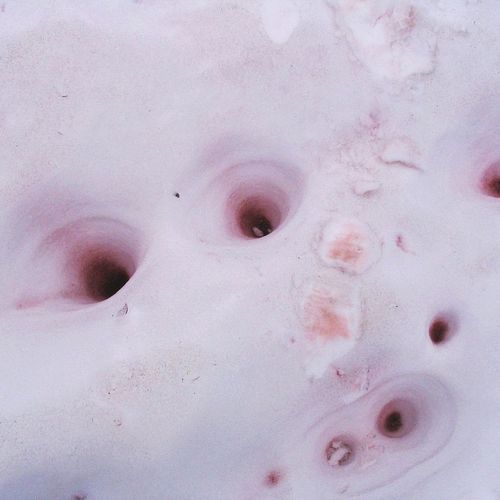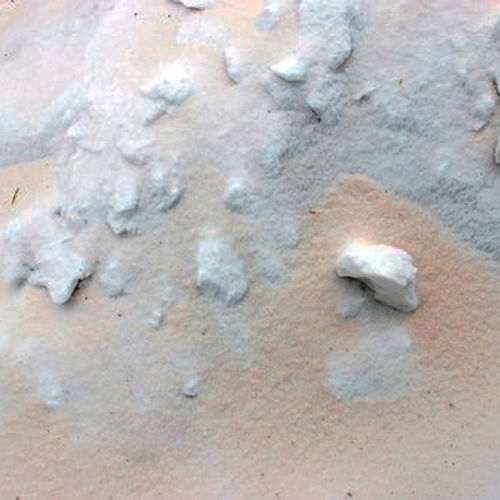| ID | #1703245277 |
| Added | Fri, 22/12/2023 |
| Author | July N. |
| Sources | |
| Phenomena | |
| Status | Hypothesis
|
Initial data
On March 3, 1876, residents of Olympia Springs, Kentucky, witnessed an amazing phenomenon. It started raining on a bright sunny morning... meat. According to the wife of a local farmer, Ms. Crouch, the meat began to fall from a clear sky around 11 a.m., with some pieces as light as snowflakes and others up to three inches long. An area measuring approximately 100 by 50 yards was covered with pieces of meat found on fences, a house and scattered on the ground.
Immediately after this event, the news about the "meat rain" spread all over the country. Some residents, including 27-year-old butcher LC "Friz" Frisbe, decided to try the meat, but described its taste as vague and unpleasant. Others, including trader Joe Jordan and pastor J. R. Nichols, compared this meat to mutton, and hunter Benjamin Franklin Ellington claimed that it was bear meat.
The city authorities decided to collect meat samples and send them to laboratories and universities for analysis. However, the test results were ambiguous and did not give a definitive answer about the type of meat. Meat samples were sent to histologists for analysis, and Dr. A. Mead Edwards concluded that it was human or horse lung tissue. Another histologist, Dr. J. W. S. Arnold, agreed with this conclusion and added that the samples consisted of cartilage and lung tissue of animals.
One theory put forward by scientist Leopold Brandeis suggests that this phenomenon is related to Nostoc, a type of cyanobacteria that acquire a jelly-like consistency after rain. Brandeis claimed that the wind could have carried the substance into Kentucky.
The most likely theory then and now was that vultures could be tearing over this area. Vultures, both black and Indian, found in Kentucky, sometimes vomit when they feel threatened or want to escape quickly. This theory could explain the variety of pieces of meat, since vultures could have different types of meat in their stomachs.
Despite numerous theories, the mystery of the "meat rain" in Olympia Springs remains unsolved. This extraordinary event is an example of how sometimes nature can surprise us in the most unexpected way.
Original news
3 marca 1876 roku, mieszkańcy Olympia Springs w stanie Kentucky, byli świadkami zadziwiającego zjawiska. W jasny, słoneczny poranek, z nieba zaczął padać deszcz... mięsa. Jak opowiadała żona miejscowego farmera, pani Crouch, mięso zaczęło spadać z jasnego nieba około godziny 11 rano, przy czym niektóre kawałki były tak lekkie jak płatki śniegu, a inne osiągały do trzech cali długości. Obszar o wielkości około 100 jardów na 50 jardów został pokryty kawałkami mięsa, które znaleziono na płotach, domu i rozsiane po ziemi.
Zaraz po tym zdarzeniu, wieść o "mięsnym deszczu" rozeszła się po całym kraju. Niektórzy mieszkańcy, w tym 27-letni rzeźnik L.C. "Friz" Frisbe, zdecydowali się spróbować mięsa, ale opisali jego smak jako nieokreślony i nieprzyjemny. Inni, w tym handlarz Joe Jordan oraz pastor J.R. Nichols, porównywali mięso do baraniny, podczas gdy traper Benjamin Franklin Ellington przekonywał, że to mięso niedźwiedzia
Władze miasta zdecydowały się zebrać próbki mięsa i wysłać je do analizy w laboratoriach i na uniwersytetach. Jednak wyniki badań były niejednoznaczne i nie dawały ostatecznej odpowiedzi co do rodzaju mięsa. Próbki mięsa wysłano do histologów w celu analizy, a dr A. Meade Edwards doszedł do wniosku, że są to tkanki płuc ludzkie lub końskie. Inny histolog, dr J. W. S. Arnold, zgodził się z tym wnioskiem i dodał, że próbki składały się z chrząstki zwierzęcej i tkanki płuc.
Jedna z teorii, przedstawiona przez naukowca Leopolda Brandeisa, sugerowała, że zjawisko było związane z Nostoc, rodzajem cyjanobakterii, która nabiera galaretowatej konsystencji po deszczu. Brandeis twierdził, że wiatr mógł przenieść tę substancję do Kentucky
Najbardziej prawdopodobna teoria, zarówno wtedy, jak i obecnie, dotyczyła sępów, które mogły zwymiotować nad obszarem. Sępy, zarówno sępy czarne, jak i indyjskie, występujące w Kentucky, czasami wymiotują, gdy czują się zagrożone lub chcą szybko uciec. Teoria ta tłumaczyłaby różnorodność kawałków mięsa, ponieważ sępy mogły mieć w żołądkach różne rodzaje mięsa
Mimo licznych teorii, tajemnica "mięsnego deszczu" z Olympia Springs pozostaje nierozwiązana. To niezwykłe zdarzenie jest przykładem tego, jak czasami natura potrafi nas zadziwić w najbardziej nieoczekiwany sposób.
Hypotheses
Microbes, single-celled algae, phytoplankton, etc.

Most of the microbes produces a white or grayish - white colony, but there are types of microbes that are capable of releasing dyes or pigments of different colors and shades (red, orange, green, yellow, blue, purple).
Colorful clouds and precipitation is unusual

Often colored cloud connected with suspended in the air, coloring substances, such as pollen of trees, flowers, or particles of clay. Precipitation clean the atmosphere from these impurities, appearing in the form of colored rain.
Puddles and snow can color various impurities, such as mikroorganizmy, sand, crushed corals, pollen, etc. up in the air and fell with rainfall.
Black rain is derived from adherence to natural rain of cosmic or volcanic dust.
White, matte dust mountain chalk provokes the appearance of white rain.
Investigation
News: The mystery of the "Meat Rain" in Kentucky, USA

For several minutes on March 3, 1876, chunks of meat rained down from the sky over Bath County, Kentucky.
Between 11 and 12 a.m. on March 3, 1876, a farmer's wife named Mrs. Crouch was making soap on her porch near Olympia Springs in Bath County. It was a clear and sunny day. Suddenly pieces of meat began to fall from the sky.
Mrs Crouch described pieces of meat ranging in size from 5 to 10 centimeters and feeling harsh. Mr Crouch saw the meat falling around his wife and described it as big red snowflakes.
News: 8 very unusual things that have ever fallen from heaven

At different times, people had to contemplate extremely strange "precipitation". These cases are undoubtedly very rare, but it should still be understood that sometimes an ordinary umbrella may not be enough.
Spiders
In the Brazilian city of Santo António da Platina in 2013 there was a downpour of spiders. A lot of tiny arthropods were carried across the sky by the strongest air currents.
Frogs and fish
This is how hurricanes often joke. The air flows absorb the contents of lakes, including frogs and fish, and at a certain moment brings it down on people.
Resume
Similar facts
Log in or register to post comments


